The Silvaner, or Sylvaner, wine grape gives some of the world’s most refined, precise, lively white wines blessed with a truly amazing aging potential. Just like the best Riesling wines, when kept in a good cellar, the best Silvaner wines have no problem aging forty years or more. And believe me, even at that ripe old age, they are utterly beautiful.
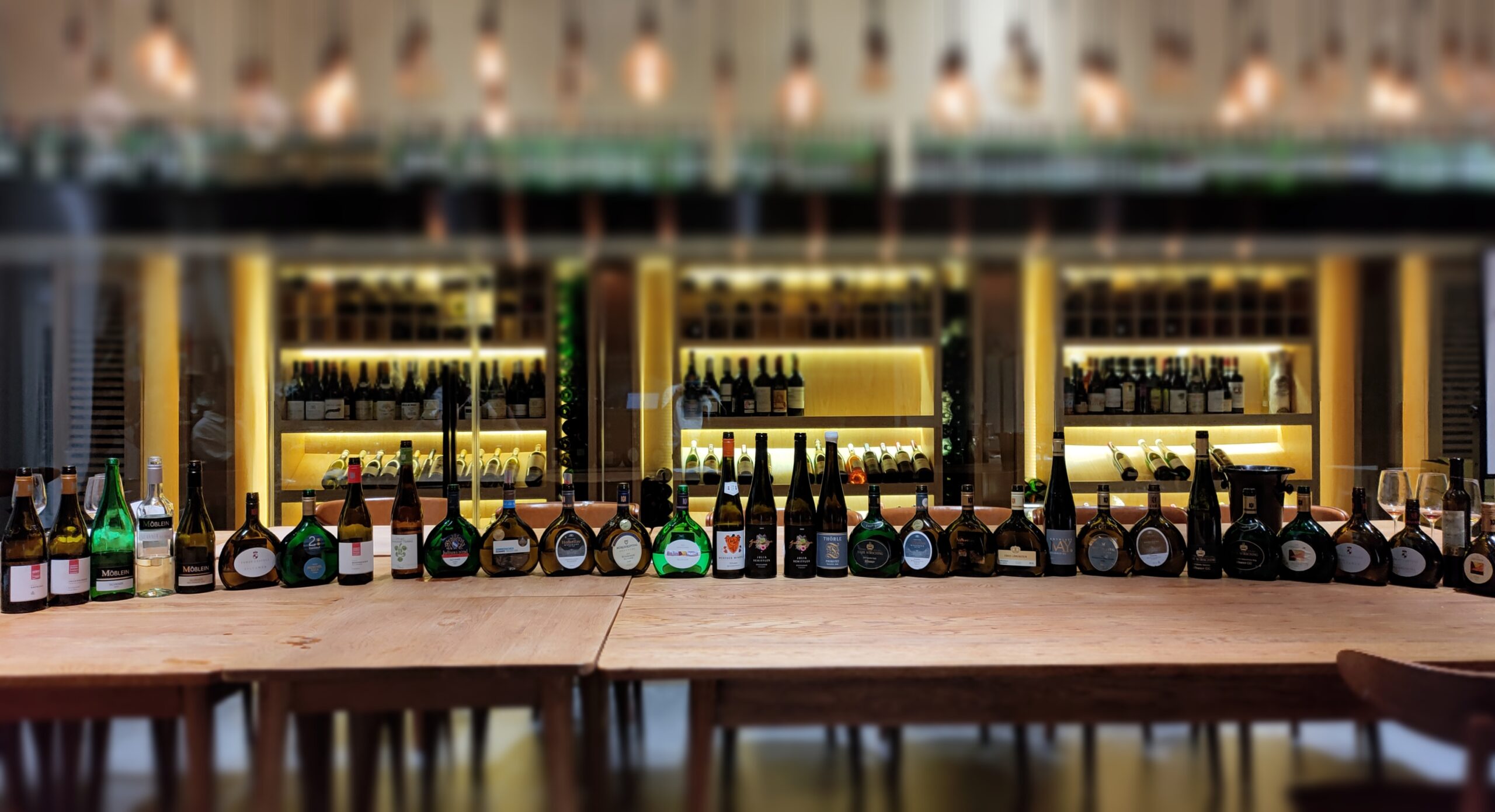 Unfortunately, the Silvaner grape’s natural proclivity to large yields can lead to some wines that are dilute and boring, and this has unfortunately given both grape and wine a so-so reputation. And that’s a shame, because both grape and wine have many qualities to boast about. In fact, I can make a very good case that Chardonnay and Sauvignon Blanc, two far more popular and better-known wine grapes than Silvaner, are also often associated with wines that border on the undrinkable. But clearly, there are entire wine regions the wine industry of which rests solely on the fortunes of those two grapes, and so nobody wants to rock the boat, which explains the almost incessant promotion and hype of such varieties and their respective wines. Poor Silvaner gets nothing of the sort: it’s lucky if and when some passionate wine writer somewhere in the world (which usually means me, plus only very few other just as dedicated keyboard-abusing wine writing individuals) writes specifically about it and its wines. But that needs to change, because in countries such as Germany, France, Italy, Switzerland and the ex-Eastern bloc, there are Silvaner/Sylvaner wines made each year that are more often than not mesmerizingly good. In fact, some of the world’s best white wines (see also: the TerroirSense Wine Review verticals in the VERTICALS section of the menu devoted to the Sylvaner wine verticals of Muré and the Burn/Clos Saint Imer Alsace estates and the Köfererhof vertical of the Sylvaner R wine made in Italy’s Alto Adige).
Unfortunately, the Silvaner grape’s natural proclivity to large yields can lead to some wines that are dilute and boring, and this has unfortunately given both grape and wine a so-so reputation. And that’s a shame, because both grape and wine have many qualities to boast about. In fact, I can make a very good case that Chardonnay and Sauvignon Blanc, two far more popular and better-known wine grapes than Silvaner, are also often associated with wines that border on the undrinkable. But clearly, there are entire wine regions the wine industry of which rests solely on the fortunes of those two grapes, and so nobody wants to rock the boat, which explains the almost incessant promotion and hype of such varieties and their respective wines. Poor Silvaner gets nothing of the sort: it’s lucky if and when some passionate wine writer somewhere in the world (which usually means me, plus only very few other just as dedicated keyboard-abusing wine writing individuals) writes specifically about it and its wines. But that needs to change, because in countries such as Germany, France, Italy, Switzerland and the ex-Eastern bloc, there are Silvaner/Sylvaner wines made each year that are more often than not mesmerizingly good. In fact, some of the world’s best white wines (see also: the TerroirSense Wine Review verticals in the VERTICALS section of the menu devoted to the Sylvaner wine verticals of Muré and the Burn/Clos Saint Imer Alsace estates and the Köfererhof vertical of the Sylvaner R wine made in Italy’s Alto Adige).
The Sylvaner grape variety
Sylvaner or Silvaner: there are two spellings, but only one grape variety. The French spelling, also used in Italy’s Alto Adige, is Sylvaner. By contrast, it’s Silvaner in Germany, though it used to be written as Sylvaner there too in centuries past (given this is a tasting report on German wines, from now I will use only the “Silvaner” spelling). Silvaner is the result of a natural crossing between Österreichisch Weiss (a little-known Austrian grape variety) and Traminer, and this is why Silvaner is believed to have an Austrian birthplace. Its name’s root, the Latin silva, is a likely reference to its originally growing in the forest or woods, though I warn you that differing interpretations of what its name really harkens back to exist. But independently of its forest presence and Austrian ancestry, Silvaner has always been very important in Germany. It is Germany in fact with which Silvaner is most associated with today. Silvaner most likely arrived there after the Thirty Years War (there exists documentation of Silvaner from Austria being planted at Castell in Germany’s Franken already back on April 5, 1659. This is why in 2009, Germany was able to celebrate the 350th anniversary of Silvaner, so the grape has obviously been hanging around German vineyards for quite some time. Silvaner’s close relationship to Germany is further shown by the fact it is, still today, mostly grown and vinified in Germanic countries, in those countries that are either geographically close to Germany or that have historical ties with Germany. Silvaner is mostly found in countries or in parts of countries that were once part of the old Austro-Hungarian Empire (Germany, Austria, Italy, Switzerland, Czech Republic, Slovachia, ex-Yugoslavia, Hungary and others).
Silvaner is a very pretty grape to look at and a wonderful one to eat (it’s one of the best-tasting wine grapes of all). Its pretty green colour is why it is also known as Sylvaner Vert; in fact, in almost countries it grows in (except Italy), the word “green” is almost always attached to the word “Silvaner”. The grape’s full name is “Green Sylvaner” in English; “Grüner Sylvaner” in German; Sylvanské Zelené in the Czech language; Zöld Szilvani in Hungary; and Zeleni Silvanec in Slovenian. (The words zelené, zöld, zeleni, and grüner all mean/refer to the colour green). The green attribute is a colour descriptor that is necessary, because there also exists a rarer, unrelated red-berried Silvaner variety as well (appropriately enough called, for example, Roter Silvaner (or Sylvaner rouge/Sylvaner à peau rouge in Alsace).
Despite it being a grape that lives in cool-climate areas, and differently from Riesling with whom it shares much the same habitat, Silvaner is not an especially hardy variety. It is sensitive to spring frosts and succumbs to extremely cold temperatures. And so, though you won’t find any Silvaner growing in places like Sicily or Mexico that are far too hot for it, Silvaner does like generally warmer microclimates within its colder habitats (and sunlight is essential to ensure ripeness of both stalks and fruit). Silvaner is slightly disease-prone too: both oidium and peronospora can be a problem, as well as grey rot. Generally, it also likes heavier, deeper soils (otherwise you run the risk of making lighter-bodied wines). That said, just like Riesling, Silvaner translates soil very well in the glass, and so rather different Silvaner wines can be made depending on whether the grape is planted on sandstone, limestone, sand and/or clay. In general the best Silvaner wines in Germany are made with grapes sourced from soils rich in one of limestone, red sandstone or Keuper marl; but while these three soil types are the most famous, they are not the only ones from were wonderfully delicious German Silvaner wines are made. When not choosing massal selections of old vines, there are two clones that most wine producers will adopt when planting Silvaner in a vineyard. The two clones available are Silvaner clone 50 and Silvaner clone 487 (a conservatory of approximately 300 clones was planted in Alsace in 1990). These two clones tend to have grapes with thicker skins and to give fruiter wines.
Silvaner wines
Last but not least, with Silvaner it is important that yields are kept low because otherwise the wine ends up being dilute and uninteresting. At low yields, Silvaner yields concentrated, complex wines that sit somewhere in between what an ideal cross of Riesling, Grüner Veltliner and Sauvignon Blanc might taste like. Depending on the soil type it is grown on, Sylvaner wines can smell and taste of green apple, pear, chamomile, quince, forest floor, menthol, mint and minerals, though for the most aprt, Silvaner is not an aromatically showy wine. Rather, it charms because of a unique texture and an inner power that is just lurking beneath the wine’s surface: it is that texture, that power, that you latch onto when tasting Silvaner’s wines and tells you there is a lot more to the grape and its wines that a cursory impression allows for. Good Silvaner wines are also always characterized by bright acidity and a real mineral personality; the best offer all that, plus very complex, intense aromas and flavours of white orchard fruit and herbal/floral nuances (thyme, coriander, rosemary, mint, osmanthus, jasmine, lemon verbena) dominating. By contrast, Silvaner wines made from high yields will still boast the texture and minerality, but specific aromas and flavours are muted and few, and the wines fail to impress. But great Silvaner wines are a marvel, the greatness of which is immediately recognizable even by the uninitiated: furthermore, just like with Riesling, not just classically dry, lemony fresh wines can be made with Silvaner, but also late harvest noble rot lusciously sweet bombshells (Silvaner is one of those grapes that takes to Botrytis cinerea very easily and well). And even though Silvaner’s growth cycle is shorter and starts earlier than that of Riesling (generally, Silvaner buds and ripens earlier), late harvest wines are commonly made with it, and even Silvaner Eiswines, which can be truly splendid, unforgettable wines.
What to eat with Silvaner
Therefore, the range of food and wine pairings with Silvaner is extremely large, because its juicy fruity aromas and flavours, lively mouthfeel plus gentle acidity, make it a very food-friendly wine. Classically dry wines match heavenly with anything involving coriander (in fact coriander seems to bring out the best in Silvaner wines), but also shellfish, vegetables, freshwater fish, even chicken, turkey, pork and veal (believe it or not, Silvaner works wonders with sausages!). The late harvested sweet wines will match very well indeed with the likes of old, mature cheese and blue cheeses especially, plus liver patés, foie gras, fruit-based desserts. In general Asian cuisines do very well with Silvaner wines, excluding the strongly spicy ones.
Sylvaner in Germany
While Sylvaner plantings have fallen in many parts of the world (countries like Alsace and Italy are busy making way too much cheap and fairly bland Riesling and Pinot Gris/Pinot Grigio wines that will ultimately backfire), things look brighter for Silvaner in Germany. Thanks to its high yields and regular productivity, it was once one of the country’s most planted grapes (in 1970 it was grown on almost 25% of the country’s surface under vine), but even today, there are still roughly 5,000 hectares of Silvaner planted in Germany (or roughly 5% of the country’s area under vine). Most of these hectares are located in two regions, the Franken (roughly 1500 hectares) and the Rheinhessen (between 2000 and 2500 hectares), but the grape is also grown in other regions, such as the Pfalz, where the wines can be surprisingly good.
The majority of Germany’s best Silvaner wines are produced in the Franken, an area that is intimately linked to the grape (just like Burgundy and Oregon are linked to Pinot Noir, Bordeaux is to the Cabernets and Merlot, and Barolo and Barbaresco are to Nebbiolo, the Franken’s most emblematic and famous wines are those made with Silvaner). It can be argued the world’s best Silvaner wines are in fact those of the Franken, if nothing else because of the sheer numbers of great wines made there. Yes, like everywhere else, some producers make orange wines, pet-nats and amphora-aged wiens, but by far the best Silvaner wines, those that can really vie with the very best Riesling, Chardonnay and other white wines of the world are the wines made along traditional winemaking guidelines. The top Silvaner wines are usually made from specific vineyard sites designated with “Grosses Gewächs” (or grand cru) and as with “Erste Lage” (or premier cru) qualifications. Make no mistake about it, these are some of Germany’s finest dry white wines that can rival the country’s best Riesling wines. Famous Silvaner vineyards include the Würzburger Stein and Stein-Harfe (both Grosses Gewächs or grand crus), Iphofer’s Kalb and Julius-Echter-Berg (premier and grand cru, respectively) and Escherndorf’s famous Lump and am Lump 1665 (again, respectively a premier and grand cru). But there are many more excellent vineyards worth signalling and knowing about. The key is that the majority of the best wines are usually made with grapes grown on soils rich in one of limestone, Keuper marl or red sandstone, though there are many fine Silvaner wines made in Germany from grapes sourced on other types of soil mixes too. The limestone, sandstone and marl soils are all of Triassic origin, and were deposited mostly into three distinct sections of the Franken. Therefore, it’s not too hard to characterize the wines made from different Franken producers, based on where the grapes are grown: to the west, the Spessart Hills north of Miltenberg is where you find the red sandstone; in the central part of the region, around Marktheidenfeld, the sandstone gives way to a shell- and fossil-rich limestone (also of Triassic origin, but deposited during the Mushelkalk); and in the eastern reaches of the Franken, where the famous Silvaner wines of Iphofen are made, the limestone is replaced by Keuper marl.
The bocksbeutel
While Silvaner wines from other regions are bottled in mostly “normal” Rhine or Burgundy-styled bottles, in Franken a large part of the production is still bottled with the famous (infamous?) bocksbeutel. The bocksbeutel is that large-based, portly, heart-shaped bottle dating back to the sixteenth or seventeenth century and that is absolutely unmistakable and unmissable (for the technically-minded out there, the correct geometric description of the bottle’s shape would be that of a “flattened ellipsoid”). It derives from the old, flat leather water bottles that people took into the fields with them (but in fact were used to store just about anything, including gunpowder and appear to have been officially or regularly sued to store wine since the early 1700s) because they were easy to carry around and in fact are, differently from normal-shaped wine bottles, very easy to keep in your coat and even pants pocket. It may not be the easiest bottle in the world to store in your cellar (but really now: how many people in this day and age really have wine cellars to speak of?), and it may still be associated in the minds of many people with the cheaper wines of yesteryear, but the fact is, it’s just a beautiful vessel to look at and the importance of which is not lost on people, especially now that all things “vintage” and “traditional” are cool again. After all, there are many in Chianti who regret the abandonment of their famous straw-covered fiasco: and even though few producers there will admit it publicly, most believe more should have been done to protect and upkeep it. Possibly in an effort to avoid repeating the same mistake, in 2002, the European Union passed laws protecting this bottle as its uniquely and historically linked to Franken (truly historical: there is something that looks just like the bocksbeutel in a sixteenth-century stone relief on the walls of the Juliusspital, one of Franken’s best wine producers, commemorating its foundation in 1576) and only a few other wine regions. For sure, there’s nothing like the pot-bellied bottle that looks like it needs to go on a diet real bad to evoke memories and thoughts of Franken’s Silvaner wines: the truly great wines you will find within will do the rest, ensuring that lasting memories of fine wines will linger long after you have had the last drop.
Recent German vintages
Germany is fresh off a run of three very good, sometimes outstanding vintages (and just how good, or not, depends on the specific vineyard site, more than the region). Nobody will have much to complain about with the wines of 2018, 2019 and 2020. However, not all the wines were uniformly great, mostly because all three years were marked by excessive heat at various times during the growing season (some more than others) and I caution wine lovers all the time to avoid falling in the trap of very poor wine writing where every hot vintage gets labeled/scored “excellent”. Differently from the kiss of life, extreme grape ripeness is often the kiss of death, witness the 1997 Brunello di Montalcino or many 2003 Bordeaux wines that were marred by unacceptably high alcohol levels and gritty tannins. Thanks (???) to climate change, in 2020 Germany recorded its highest sunlight hours ever, but it was also a remarkably dry vintage (the driest of the three, in fact). The drought-stressed vineyards gave essentially unacceptable fruit for anyone serious about making good wines, so the best 2020 wines were made by those estates farming the best vineyards and where they didn’t hesitate to get rid of the cooked grapes. In general, the 2020 wines are marked by lowish acidity levels (much lower than the 2019s, for example) thanks mostly to two days of heat spikes in mid-September, but at the same time this gives the 2020 wines their fleshy appeal. Still, the best wines will have no trouble aging well, given that most of them are blessed with remarkable balance and freshness. Despite three separate moments of heatwave in 2019, the wines of this vintage are potentially the most elegant of the three, with wines that boast perhaps also the best balance of the three.
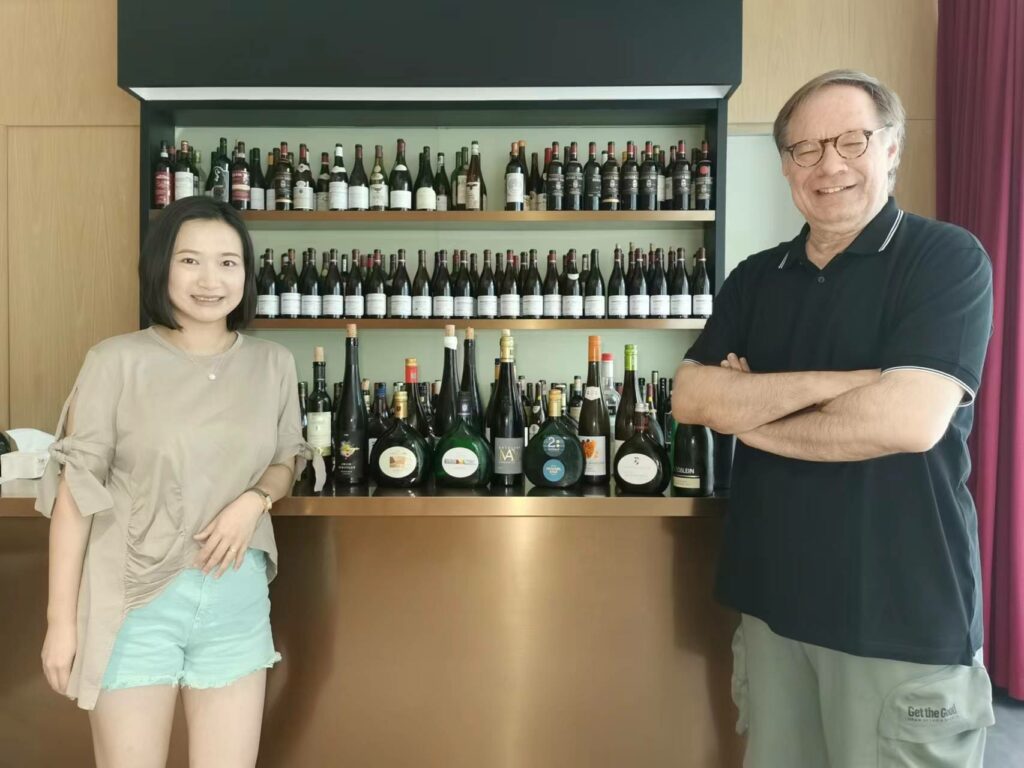
All the wines in this tasting report were tasted in my office in Shanghai in July 2022. Most of the wines were sourced thanks to Wines of Germany-China though a number of bottles also came from my personal cellar or were sent to me directly from friends in Europe (I have been drinking and collecting German wines since my teens, and to this day Rieslings, Silvaners, Gewyrzes and Mullers represent about 40% of my cellar). These other wines have been included so as to make this tasting report more complete and representative of the region’s wines, the best of which are made in limited volumes and can really only be tasted where they are produced in Germany. This tasting of German Silvaner wines I reprt on here is not just the first of its kind but also the largest ever Silvaner tasting organized in China and I am truly honoured to be the one who made it happen. It is in fact an example of why I accepted the postion of Editor-in-Chief at the TerroirSense Wine Review, because I wanted to start giving more visibility (much more) to fantastic grape varieties and wines that essentially nobody ever writes about with any regularity. But I could not have done it though without the help and passion of the representatives of Wines of Germany in China (a BIG thanks to Jeuce Huang and Mateus Wu) to whom I am deeply grateful for their help in sourcing all the wines and their excellent organizational skills. There are many other wonderful German Silvaners to taste and tell you about, and I hope to write about them soon enough either when I next take one of my usual long winery forays in Europe or by having more such wines increasingly exported to China.
The wines in this tasting report
Baldauf
Founded in 1966 by Karl-Heinz and Thekla Baldauf in the town of Ramstahl, the estate began life small (it boasted only one hectare initially) but has since grown to about fifty hectares of vines in prime vineyard sites such as the Stein (of Stetten), and the Langenberg (of Retzstadt). The winery also buys grapes from local growers with whom it ahs established working contracts. All the clsassic varieties are grown. Including crossings such as Bacchus, Kerner, Rieslaner and Scheurebe. The winery has been practicing organic farming since 2010 (ECOVIN certified).
Baldauf 2020 Silvaner Trocken Muschelkalk Franken 88
Luminous straw-green. Pomelo, thyme and white peach on the pretty, perfumed nose. Then mineral and tart, with a juicy, sweet and sour finish and a little light carbonic gas for added freshness. Not the last word in complexity but full of easygoing, early appeal. Drinking window: 2022-2025.
Baldauf 2020 Stetten Stein Silvaner Trocken Clees Franken 90
Good straw yellow. Aromas and flavours of coriander, rosemary and orchard fruit. Gently textured but tactile, with a fleshy-stony mouthfeel and earthy nuances on the long close. This will probably show better in a few years and if you remember to decant ahead. Drinking window: 2022-2028.
Battenfeld-Spanier.
In 2016, Caroline Gillot of Kühling-Gillot married Hans-Oliver Spanier of Battenfeld-Spanier uniting two prestigious Rheinhessen estates from the north and the south of the region (he took over his family estate in 1991, she did the same in 2002). However, even though the wines are all made by Spanier, the estates remain distinct and so they should given the extremely diverse vineyard sources of the two. While Kühling-Gillot is located in the north and boasts some very famous sites of Nierstein such as the Hipping and the Pettenthal, famous for their red slate, while Battenfeld-Spanier is in the southern reaches of the Rheinhessen oof mostly limestone soils and that are hence marked by citrussy acidity and lift. Both estates are now farmed biodynamically (at Battenfeld-Spanier they began the process back in 2002).
Battenfeld-Spanier 2020 Hohen-Sülzen Silvaner Trocken Alte Reben Rheinhessen 90
Pale straw-yellow. Nicely open-knit aromas and flavours of apricot, tangerine, mint and hazelnut. Silky, lush and juicy but with good mid-palate energy to give shape and focus to this pretty Silvaner. Not yet particularly complex but very easy to drink from start to finish. The Alte Reben monicker means “old vines”. I quite liked this, a really hard to beat wine for its Ortswein level and friendly price. Drinking window: 2022-2026.
Bickel Stumpf
A winery that was born out of the marriage of two well-regarded winemakers, Carmen Bickel and Reimund Stumpf, this is one of my regular go-to wineries when I eat in my favourite German restaurant in Shanghai, though I realize that’s probably besides the point. Fact is, the wines are just delicious, but nuanced, so they deserve attention and focus or their sneaky concentration and many charms will pass you by. Founded in 1976 in Frickenhausen (but the cellar is in Thüngersheim), the winery owns about ten hectares of vines in well-known vineyard sites such as the Kapellenberg (of Frichenhausen) and the Johannisberg (of Thüngersheim, which is important because there’s more than a few Johannisberg vineyards in Germany). About a third of the estate’s vineyards are planted to Silvaner, but there’s also Riesling, Müller-Thurgau, Gewürztraminer not to mention red varieties ranging from Pinot Noir (Spätburgunder), Portugieser and the little-known Cabernet Dorsa, for example. This is another estate in this tasting report that also makes high-quality spirits such as Brandy.
Bickel Stumpf 2019 Thüngersheimer Rothlauf Grosses Gewächs Silvaner Franken 90+
Bright straw-green. Somewhat reticent, still youthfully closed aromas and flavours of orchard fruit, underbrush and wet stones. Shows a slightly tannic nuance on the long, herb-accented finish. This needs decanting a few hours ahead to show best. I expect it to get better in the years ahead, hence the + sign on my score. Drinking window: 2022-2026.
Bickel Stumpf 2018 Silvaner Muschelkalk Trocken Franken 91
Vibrant straw-green. Very typical Silvaner nose brimming with white peach, fresh citrus, herbs, and minerals: nothing showy but precise, clean, linear, refined and with more concentration that a careless first sniff might say. Then similar flavours also delivered in an understated manner but with noteworthy clarity and cut. Lovely fruit-acid balance here. Closes very long and mineral; this is excellent. Drinking window: 2022-2026.
Bickel Stumpf 2018 Thüngersheimer Johannisberg Erste Lage Silvaner Trocken Franken 93
Luminous straw-green. Crystalline aromas and flavours of yellow and white peach, nectarine, thyme, menthol. Very focused, energetic and clean, with repeating notes of yellow peach and rose water lingering nicely on the vibrantly spicy and mineral finish. Outstanding. Drinking window: 2022-2030.
Bickel Stumpf 2017 Thüngersheimer Rothlauf Silvaner Grosses Gewächs Franken 92+
Pale yellow-green color. At once explosive and reduced on the nose, offering strong notes of minty herbs, lime peel, seashell, spices, and flinty minerality. Then much more herbal in the mouth than the nose suGrosses Gewächsested (and much more so than Bickel Stumpf’s 2018 Silvaner Thüngersheimer Johannisberg Trocken, for example) this is also more closed and needs plenty of time in a good cellar to show all it has to offer, which is plenty. The aftertaste is long and savory, showcasing building complexity. The Rothlauf is a true grand cru, or grosse gehwachs (GROSSES GEWÄCHS for short); but in fact, it is the historic eastern section of the larger Johannisberg vineyard, characterized by being very steep and an especially warm microclimate, it also has a site-specific soil (shell limestone above and Bunter sandstone below, but the latter breaks through the surface). The Rothlauf is a truly unique site in that it boasts two of the Franken’s best Silvaner soils (the third in tha noble tripo being Keuper marl). Drinking window: 2022-2032.
Bürgerspital.
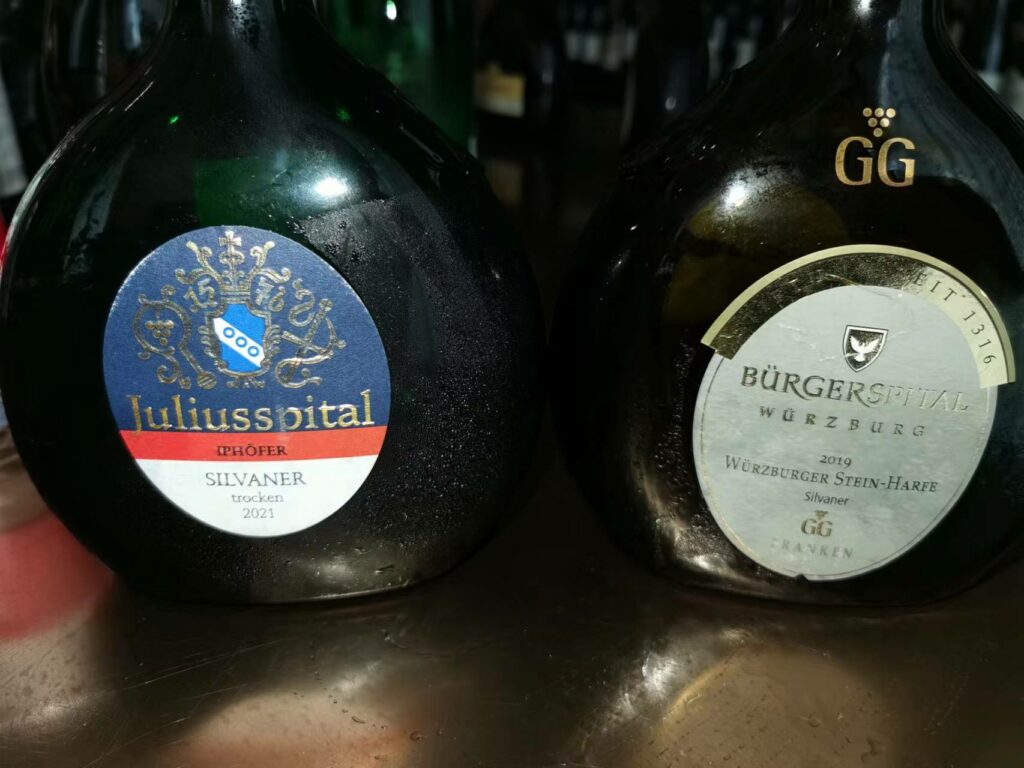
One of Germany’s most historic and best wine estates (the winery was founded in 1316, when Johannes von Steren and his wife Mergardis donated their property to the city of Würzburg; the institution’s first vineyards date back to 1344 and still today the winery has Steinwein of the 1540 in its cellars), I can’t even begin to tell you how many great wines I have had from this address over the decades. The winery (the full name of which is Burgerspital zum Heiligenstein) is especially associated with the legendary Würzburger Stein vineyard, one of the world’s most famous and from where truly legendary Silvaner wines have been made. It has been documented that Silvaner was first planted here back in 1665 by Cistercian monks, so you know Silvaner and the Stein go hand in hand.
Bürgerspital 2020 Würzberger Silvaner Trocken Franken 90
Crystalline straw-green. Big, dense, rich and ripe wine boasting aromas and flavours of white peach, minerals and fresh citrus fruits. Closes long, savory and broad; maybe not the most refined Silvaner wine you’ll ever taste but certainly flavorful and juicy, with crystalline acidity that extends the inner-mouth perfume on the long back end. Drinking window: 2022-2027.
Bürgerspital 2020 Würzberger Stein-Harfe Silvaner Grosses Gewächs Franken 94
Good full straw yellow. Chamomile, tarragon and cumin complicate orchard fruit and white flowers on the inviting nose. Fairly backward and very tightly knit on the palate, showing hints of smoked ham, grilled nuts and liquid rocks along with citrussy, nectarine, quince and minty flavours. Closes with an essence of jaGrosses Gewächsed minerality (you can tell this is born off limestone soils) on the extraordinary palate-saturating finish that is long, savory and very serious. Currently almost too austere, give this plenty of time in a good cellar to develop fully, as it will age forever. The Stein-Harfe is one of the best sections of the very large Stein site, facing southeast through southwest in the warmest, most sunlit part of the Stein. A very famous vineyard, the Stein-Harfe was mentioned already in the latter half of the seventeenth century; the Stein-Harfe’s name derives from that of “harp” (harpfe, back then), given that its shape is supposedly reminiscent of that musical instrument. Drinking window: 2022-2040.
Fürst Castell
Located appropriately enough as its name implies in Castell, the estate’s name actually harkens back to that of one of Germany’s oldest noble families the ancestors of which were engaged in vine growing and winemaking already back in the thirteenth century. The property is a complicated one divided in three different branches (the Fürstlich Castell’sches Domänenamt, the Fürstlich Castell’sches Forstabteilung, and the the Fürstlich Castell’sches bank, which is the oldest Bavarian bank). The winery can count on roughly seventy hectares of vines in many famous local sites such as the Kirchberg, the Kugelspiel and the Trautberg, but also sources fruit from high-quality local growers with whom it has long-standing working relationships (these wines are labeled with the Castell-Castell monicker and are part of a separate line of wines). About 40% of the land under vine is quite correctly devoted to Silvaner, that speaks of Franken like no other variety but there’s also about one fifth of the vineyards planted to Müller-Thurgau, another much underrated variety that gives outstanding wines in Franken. This is yet another Franken estate that makes excellent fruit brandies.
Fürst Castell 2020 Silvaner Trocken Franken 88
Pale green-tinged colour. Clean aromas of lime and white flowers. Juicy and fresh, with simple flavours of floral orchard fruit. Finishes classically dry and bright, but with only modest intensity. Drinking window: 2022-2025.
Fürst Castell 2020 Casteller Silvaner Franken 89
Crystalline, very pale straw-green. Reticent aromas of nectarine, mint and grilled nuts on the nose. Off-dry and juicy, but a little simple on the rather straightforward palate. Perfectly fine, but I was left wanting a little more from every sip: perhaps cellaring a little more will help it develop some complexity. Drinking window: 2023-2026.
Fürst Castell 2020 Casteller Kugelspiel Silvaner Spätlese Franken 92
Good straw yellow. Yellow and green apple, pear, and rose water on the very pure, lifted nose and in the mouth. Excellent inner-mouth perfume and with a laser beam of balanced acidity that nicely extends the flavours on the long back end. The finish is more like that of a Vendanges Tardives than a Sélection de Grains Nobles. Much deeper and more complex than any of the wines I tried from this estate this year. Very well done here, this is an absolute winner of a wine. Drinking window: 2024-2032.
Furst Löwenstein
An historic estate in the hands of the same family since 1611, that has historically run famous estates in the Rheingau and the Franken and that also owns a small number of hectares in the Baden. The wines are made at the Schloss Kleinheubach, the family castle. The estate can count on many vineyards but one especially amazing monopole site, the Homburger Kallmuth, one of Germany’s best vineyard sites that lies on the reaches of the lower Main River, an anphitheater that is exceptionally steep (up to 80% in gradient) though not very high (150-212 meters above sea level, roughly). Like other wineries in this tasting report, Furst Löwenstein is a member of the VDP (Verband Deutscher Prädikats-und Qualitätsweingüter e.V.), a high quality growers association.
Fürst Löwenstein 2018 Homburger Kallmuth Silvaner Trocken Franken 93+
Good full straw yellow. Musky aromas of yellow apple, quince, quinine, orange peel, chalk and spices. Juicy, concentrated and rich, but in need of a good four or five years of bottle aging to allow the complex deep flavours to emerge fully in their multifaceted reality. Excellent, extremely smooth and long, with building concentration and extreme spiciness in the glass. I liked this so much I found it on a wine list at dinner the next day and immediately ordered it. The talent present at the winery is noteworthy: the Kallmuth is a site that can potentially suffer in droughty years, but there’s no sign of that in this beautiful wine. Drinking window: 2025-2035.
Hans Wirsching.
One of the largest privately owned wine estates in Germany boasting about ninety hectares around Iphofen in some amazingly high quality vineyards, the Wirsching family has been involved with vineyards and wine since at least 1528 (that year Hans Wirsching donated a vineyard to the Ebrach monastery). The soils here are characterized by Keuper marl (a sedimentary rock consisting of clays mixed with gypsum) that gives lively spicy mineral wines that are very recognizable. Hans Wirsching is one of the best sources of Silvaner wines and I never tire of this estate’s wines.
Hans Wirsching 2020 Iphöfer Kalb Silvaner Trocken Erste Lage Franken 93
Now this is really great. Crystalline straw-yellow with green tinges. White peach, chamomile, quince and minerals on the sweetly-spicy nose. Then very pure and downright saline with a jaGrosses Gewächsedly mineral, fresh complex and multilayered mouthfeel with flavours that are very similar to the aromas. Very crystalline and long with repeating nuances of cilantro and white pepper, plus complicating crystallized ginger. Outstanding, really amazing and it’s not even a grand cru (grosse gewachs) site, but I have always thought the Kalb to be underrated. Drinking window: 2023-2033.
Hans Wirsching 2018 Iphöfer Kammer Grosses Gewächs Silvaner Trocken Franken 93
Vibrant straw-green. Tropical fruit and saline nuances on the nose and the mouth complicate refined orchard fruit and herb notes that build with aeration. Very pure and very concentrated on the log juicy, mineral finish, this needs time in a good cellar to develop further. Located at 250-350 meters in altitude, south-facing, on a gypsum-marly soil. Drinking window: 2022-2026.
Hans Wirsching 2016 Iphöfer Julius-Echter-Berg Grosses Gewächs Silvaner Trocken Franken 94
Golden-tinged straw yellow. Ripe orchard fruit, menthol, lime peel, balsamic oils, chamomile, and quince on the very deep, complex nose. Then also very big, powerful, and ripe in the mouth, with sweet spice and earthy nuances to the orchard fruit flavours. Closes very long and very clean with a strongly savory and extremely complex personality. Builds nicely in the glass, this is yet another Silvaner wine that will benefit from both aeration in the glass and extended cellaring. About 350-370 meters in altitude at the upper portion of a south-facing, steep slope, the Julius-Echter-Berg is a grand cru site located on the Schwanberg slope characterized by grey-brown Keuper marl soil (essentially, layers of green-brown Stuttgart Formation sandstone rich in marine fossil sediments. The site is named after the founder of Juliusspital, the Prinz-Bishop of Würzburg Julius Echter von Mespelbrunn who lived from 1545 to1617. Drinking window: 2025-2036.
Horst Sauer
Horst Sauer has long been one of my favourite German growers, perhaps ever since I tasted a Silvaner Beerenauslese or Trockenbeerenauslese from the estate’s Escherndorfer Lump vineyard in London over fifteen years ago or so. I was at a very famous wine competition (at the time the world’s largest) and though I was tasting blind, I wasn’t at all blind to the amazing wine that ahd been poured in my glass: well, lo and behold, the other tasters at the table only wanted to award “only” a silver medal, to which I objected strongly. So strongly in fact, that despite my being the junior person at the table and therefore in no real position to argue too much, I asked for permission to write my reasons on the back of our score sheets explaining why I thought why I thought the wine deserved a gold. And I did, a full page’s worth! Suffice it to say, that at the end of the day, I was taken aside by the competition’s most senior chairman and told that they all agreed with me and had upped the wine to a gold. I didn’t know at the time the wine was by Horst Sauer, but from that day on, I was cognizant of the fact that Silvaner was capable of the utmost greatness.
The Horst Sauer winery was founded in 1977 in Escherndorf and can boasts vines in some of the best vineyards such as the Berg and the Lump (the Escherndorfer Lump is an exceptional, steep site has been characterized by its very warm microclimate and limestone-rich soils). And though Horst Sauer is famous for his mineral classically dry wines, this estate is remarkably adept at producing sweet late harvest wines, even Eisweins. The winemaking facilities were completely modernized in 2006 and the estate is a member of the VDP. I want to add that while all the wines made here are amongst the best of the region, this estate makes some fantastic, very pure and mineral Müller-Thurgau wines. Don’t miss them.
Horst Sauer 2019 Escherndorfer Silvaner Trocken Trocken Franken 91
Golden-tinged straw green. Very creamy herb- and mineral-accented, with savory, lees-influenced aromas and flavours of white peach, Asian pear and crab apple. The aftertaste is long and fairly soft, but still lively. Drinking window: 2022-2026.
Horst Sauer 2017 Escherndorfer Lump Silvaner Trocken Franken 92+
Good full yellow-green. Green apple, lime zest, and wet stones dominate on the nose and in the mouth. Delicately flinty and suave, this has a rising, vertical personality and features a multifaceted building complexity. Do yourself a favour and don’t pop a cork on this for at least another couple of years; you’ll thank me later. Drinking window: 2024-2033.
Horst Sauer 2009 Escherndorfer Lump Grosses Gewächs Silvaner Trocken Franken 95
Golden yellow: this looks like, at the very least, like an Auslese. Very mineral, downright flinty in fact, but at the same time very ripe, it literally explodes from the glass with aromas and flavours of mango, lychee, passion fruit, and quince. Very suave and long, this is marvelously dense and multilayered. Off-dry, bordering on the frankly sweet, but with lively acidity keeping it lively and fresh, this rich and ripe yet remarkably young wine will easily last another twenty years or so in a good cellar. Drinking window: 2022-2040.
Julia Schittler
Julia Schittler was born into not one but two winemaking families (her parental units had wineries in Zornsheinm and in Weinolsheim) so she had likely no escape from wine. Afetr travelling and working in vineyards around the world, she came back in 2015 and took over in the cellar. Buta s mucha s she liked the family’s Schittler-Becker wines, they were mostly known for being easy-drinking, while she wanted to make something a bit more complex. And so the Julia Schittler line of wines was born. Her wine label depicts the flora and fauna of the vineyard and its specific soil: so for example, the Silvaner label shows clay, a fox, herbs, and poppies, because those either grow or live in the vineyard, and because they remind one of the wine’s aromas and flavours. Schittler’s favourite wine is Silvaner, and it shows: her wines are some of the most brilliant of this report. Just make note of the fact they all benefit from prolonged aeration. The Eiswein is especially impressive.
Julia Schittler 2020 Zornheimer Guldenmorgen Sylvaner Trocken Rheinhessen 92
Luminous straw green. Jasmine, lemon verbena, herbs and a fruit cocktail quality on the nose and in the mouth. The aftertaste is delicately vibrant and long. Much lighter and fresher than this estate’s 2019, it is more lemony and mineral, but also less concentrated, though both vintages are excellent wines. In the end, which you prefer will be really a matter of personal preference. Schittler chooses to use the old spelling of Silvaner, with the “y”, as it is in Alto Adige and Alsace. Drinking window: 2024-2031.
Julia Schittler 2019 Zornheimer Guldenmorgen Sylvaner Trocken Rheinhessen 92+
Good full straw yellow. Very sweet on entry then pure and lively with hints of passion fruit and mint. Closes long, with a very herbal nuance plus white flowers and peach fruit. A very concentrated wine that smells like an Auslese but tastes classically dry. Schittler chooses to use the old spelling of Silvaner, with the “y”, as it is in Alto Adige and Alsace. Drinking window: 2024-2034.
Schittler 2016 Silvaner Eiswein Rheinhessen 94
Vibrant, pale golden yellow. Steely, very lemony aromas of quinine, grapefruit, passionfruit, peach and flint. At once ripe but tangy and fresh, with sweet but extremely clean fruity flavours (fresh citrus, mango, papaya, passionfruit) that are very light on their feet, elegant and cool. Finishes long, lifted and lively, with Silvaner’s very typical graceful mouthfeel. Even though it’s very sweet, this is remarkably lifted and precise and just dances ballerina-like on your taste buds without any weight whatsoever. Try to get a hold of this to see just what beauty and tastiness Silvaner can deliver at the highest predikat levels. Differently than in the 2019 and 2020 Julia Schittler dry wines I tasted, labeled as Sylvaner, this wine, labeled simply Schittler, carries the modern name of Silvaner, with the “i”, on the label, instead of Sylvaner.
Juliusspital
Many people do not know that a wine from the Juliusspital, the 1950 Riesling Julius-Echter-Berg Auslese was served at the coronation celebration of Queen Elizabeth II in London in 1953. But the winery has numerous other things to boast about, not the least of which that it makes some of Germany’s greatest wines. The world’s, really. The winery was founded in 1576 by Prince-Bishop Julius Echter von Mespelbrunn who followed the model of the Hospices de Beaune (there is a lot more to this place than “just” a winery: a hospice, a home for the elderly and forestry lands are all part of this domaine, though care of the sick has now been passed on to another institution). The vineyard holdings are extensive, close to 200 hectares in some of the best sites around, including of course the famous Julius-Echter-Berg and the Lump in Escherndorf.
Juliusspital 2021 Iphöfer Silvaner Trocken Franken 94
Lively straw-green. The very pure aromas and flavours of white peach, nectarine, lemon verbena, jasmine, sweet spices and minty herbs are both complex and refined. There is something vaguely “rieslingy” about this. This boasts superlative acid-fruit balance: this is not just elegant, but endless, in that every sip just makes you want to get another right away. Finishes extremely long and juicy, with a marvelously translucent quality to its pristine, mineral, orchard fruit, and floral elements. Best non-grosse gewachs Silvaner I have had in some time. Drinking window: 2022-2026.
Mosslein (Mößlein).
Martin Mosslein is a generations-old winery in Zeilitzheim that decided to move forward at the end of the first devcade of the 2000s with new buildings and a vinotheque. They aren’t just a winery that grows all the typical grapes of the region (Silvaner, Riesling, Pinot Grigio, Pinot Blanc, Trollinger, and Pinot Noir), but a distillery too.
Mößlein 2019 Silvaner Trocken Franken 90
Pale straw yellow-green. Lovely, just barely off-dry aromas and flavours of chamomile and white peach. Very juicy and lively on the linear, pure medium-long aftertaste. By no means the most complex white wine you will ever taste, but this has an endearing easy drinking quality and is remarkably well balanced, so I’ll be generous in my scoring. Is it a 90 points wine? Perhaps not: but it’s just as probable that nobody you will serve a glass of this to won’t like it, and there’s something to be said for that. Drinking window: 2022-2026.
Mößlein 2019 Silvaner der Franke Trocken Franken 88
Medium straw yellow. Slightly sweeter thans Mosslein’s entry-level Silvaner Trocken, and also a little more concentrated in its herbal and peach aromas and flavours. Closes medium-long and delicately saline. Drinking window: 2022-2026.
Mößlein 2018 Meisterwerk Silvaner Trocken Franken 90
Medium-deep yellow. Apple, pear, quince jelly and fresh herbs on the nose and in the mouth. Big, deep and richer, with a thick mouthfeel but finishes suave, not coarse with a hint of bittersweet herbs persisting nicely. Drinking window: 2022-2026.
Ökonomierat Rebholz.
A well-known estate that has many fans that ahs been involved in vine growing since 1632, the Rebholz estate is a pioneer in organic (certified in 2005 and biodynamic in 2006) and natural winemaking the wines the wines of which don’t smell like a dead horse’s armpit but are instead extremely clean and well-made, faithful both to the variety and their place of origin. I cannot recommend thse wines enough, and not just the Silvaner, because for example the Weissburgunder (Pinot Blanc) wines here are excellent too. After all, Eduard Rebholz received the title of Ökonomierat in 1951 for merits in viticulture, so grape-growing is something that ahs always been done with care and passion here.
Ökonomierat Rebholz 2019 Silvaner Trocken Pfalz 91
Crystalline straw-green colour. Very pure, minerally-etched floral orchard fruit on the nose. Then suave and quite dry in the mouth, with excellent lift to the quince and floral flavours. Closes with really noteworthy purity and precision, even though it’s a little fat in the typical Pfalz-style and in the style of the vintage, with rich and ripe orchard fruit rising on the warm, medium-long finish. Dense and lively enough to match with richer foods such as goat cheese with herbs, but this will make a terrific aperitif. Drinking window: 2022-2027.
May (Rudolf May)
May 2020 Thüngersheimer Rothlauf Silvaner Franken 93
Pale straw-green. Passionfruit, guava, green apple, white flowers and minerals on the complex nose. Light and lively in the mouth, with a laser beam of orchard fruit and herbs persisting nicely on the clean and lively finish, and that features a strong note of lime. A beautifully concentrated wine that is very clean, long and smooth, this walks a real tightrope on the cusp of acidity on one side and fruitiness on the other. There’s a Riesling-like elegance to this. The Rothlauf is the old historic parcel within the Johannisberg vineyard. It is not only the hottest part of the Johannisberg, but it also has a unique soil structure where the sandstone emerges in spots through the shell limestone above it. Drinking window: now-2029.
Schieferkopf (Chapoutier).
Schieferkopf is one of the many estates all over the world of the famous Chapoutier estate in the Rhône that in 2015 decided to branch out to Germany after having started making wines in Alsace. In Germany three regions were targeted, the Baden, the Pfalz, and Franken, and from the Franken a pretty Silvaner wine is made. The Silvaner is planted on clay-limestone on shell limestone.
Schieferkopf/Chapoutier 2018 Silvaner Franken 91
Golden-tinged hue. Aromas of quince and balsamic oils, complemented by tangerine and lemon oil and a strongly floral note. A pleasant, easy-drinking Silvaner with aromas and flavours of quince and white peach, complicated by herbs and honey. Very broad and easy drinking, with a creamy but vibrant acidity. Closes long with a grippy texture and hunts of orange peel and white flowers. Schieferkopf is a brand owned by the famous Rhône house of Chapoutier. Drinking window: 2022-2026.
Staalicher Hofkeller.
Founded in 1128, this is the oldest winery in Germany, run without interruption by the ruling power of the time, from bishops to royal families. The wine cellar holds many old bottles, the oldest dates back to the 1874 vintage. The winery farms and wons vines in many top sites such as the Julius-Echter-Berg in Iphofen, the Lämmerberg in Randersacker, and the justa s famous Stein of Würzburg. The estate is amember of the VDP.
Staatlicher Hofkeller 2020 Randersackerer Silvaner Trocken Franken 90
Straw green. Very floral aromas and flavours of nectarine, yellow apple and pear, complemented by white flowers. Very nice balance, with juicy acidity and noteworthy length. Drinking window: 2022-2026.
Staatlicher Hofkeller 2020 Würzberger Stein Silvaner Franken 92+
Medium deep straw green. Perfumed aromas of jasmine, quince and grilled nuts. Very well balanced, closing long rich and dense with real depth and complexity of flavour. Will improve considerably with further time in a good cellar. This is beautiful. Drinking window: 2025-2035.
Staatlicher Hofkeller 2018 Randersackerer Marsberg Silvaner 300 Jahre Edition Franken 93
Good full starw yellow. Clean fresh and multifaceted aromas and flavours of mirabelle, peach, rose water, passionfruit, grilled nuts and herbs. Then very light on its feet despite being hugely concentrated, this very long, lively not to mention very pretty wine finishes with an almost Grüner-like quality. Becomes even deeper and more complex with prolonged aeration in the glass. Drinking window: 2025-2035.
Staatlicher Hofkeller 2019 Würzberger Stein Grosses Gewächs Silvaner Franken 94
Vivid straw green. Wonderfully vibrant, spicy inviting nose offers crystallized ginger, nutmeg, quince, cumin and an iodiney quality. Densely packed, tight and young, with a terrific spine of ripe citrus, powdered stone and sweet spice flavours. Already seamless but coats the palate with thick orchard fruit and spicy nuances on the horizontal, extremely long, crystalline finish. Just a knockout wine, like drinking pure spring rock water. Drinking window: 2024-2038.
Werther Windisch.
Jens Windich comes from many generations of farmers, but his ancestors, grandparents and parents used not to estate-bottle, but sold to biGrosses Gewächser companies, while he wanted to make his own wines and sell them on his own too. He joined the family estate in 2008, but he considers his “first” vintage to be the 2010, a difficult vintage but of which he really liked the wines. He boasts about eleven hectares from which he makes pure, lively wines (he uses concrete tanks for is single-site wines in the hope to deliver the purest possible expression of site, while old oak barrels are more for the entry- and middle-tier wines) that are really turning heads.
Werther Windisch 2017 Silvaner Trocken Agrad14minuten Rheinhessen 91
Lively straw green. Pomelo, tangerine and herbs on the minerally vibrant nose. Very balanced, smooth and herbally nuanced orchard fruit flavours on the long savory bittersweet finish. The really lovely smoothness and balance are this pretty wine’s trump cards. The wine’s name refers to a longitude reading. Drinking window: 2022-2026.
Thörle
The family has been linked to farming and wines since the sixteenth century but it was in the mid-1980s thanks to Rudolf Thörle who invested more and more in high quality vineyards from which to make just as high quality wines that th estate really started rolling. Today, things are run by brothers Christoph (mostly sales) and Johannes (mostly wine production) since 2006 who in reality all do a bit of everything as is the custom at small family-run wineries, the estate is located in Saulheim in the Rheinhessen. Very forward-thinking wines are made here, with long lees contact and mostly stainless steel to deliver pure expressions of site. The estate farms twenty-eight hectares organically and biodynamically, and in 2019 they built a new winery.
Thörle 2020 Saulheimer Probstey Silvaner Trocken Rheinhessen 90
Good full straw yellow. Aromas of apple, pear and chamomile, lifted by a hint of cut grass and grapefruit. Rich and big on entry, then more linear, with a spicy peppery note to the very broad and ripe spicy fruit flavours on the long finish. Drinking window: 2022-2026.
Winzer Sommerach
The Winzerkeller Sommerach was founded in 1901 and is the oldest winemaking cooperative in Franken. In 2006 they rebuilt the buildings (the new winery won the German Wine Architecture Awards in 2007) creating also a bar and terrace area for wine tastings. The coop is lucky to be able to source grapes from top vineyards like the Katzenkopf (cat’s head). I find the wines to be very well made and are much better than what you might think is likely to come out of a coop.
Winzer Sommerach 2020 Sommeracher Silvaner Trocken Franken 90
Bright straw-green. Lively aromas of quince, green apple, herbs and minerals. Creamy and herbal in style that is a little less fruity and more mineral than other Silvaner wines. Closes long and very savoury, this is really quite good if a little high on alcohol clout, but it’s so big and dense that this pretty wine can stand up to white meat dishes as well as making a fine aperitif. Drinking window: 2022-2026.
Winzer Sommerach 2020 Silvaner Katzenkopf Kabinett Trocken Franken 91+
Pale, green-tinged color. Rather withdrawn nose offers spearmint, cumin, menthol and crushed stone nicely complemented by a whiff of lime. At once suave and piercing, with harmonious acidity giving very good cut and clarity to the stone fruit and herbal flavours. The aftertaste is both broad and aromatic. Drinking window: 2024-2030.
Winzer Sommerach 2007 Silvaner Sommeracher Katzenkopf Beerenauslese Franken 94
Deep amber yellow colour (more amber than yellow, almost red in fact): this looks like the grapes were hit by a ton of noble rot. Wonderfully complex, deep and luscious aromas of musky peach, raisins, toffee, banana flambé, milk chocolate, figs macerated in port, and minerals, plus a light smoky quality. Then supersweet and rich, in a more massive style on entry that turns leaner and more refined in the middle and oin the long finish, with obvious notes of passerillage and marmelady botrytis. Closes long and suave with nuances of grilled fruit and a pliant texture that are extended and lifted by bright harmonious acidity. Nothing to say, this is just a greats weet wine that many tasters will mistake for a Riesling. This site’s soil is weathered clay-marl and more calcareous marl. Drinking window: 2022-2036.

 中文
中文
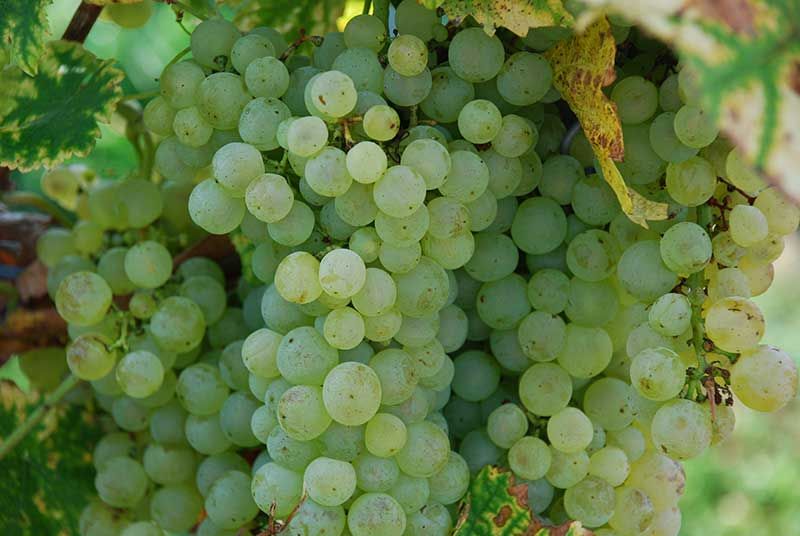
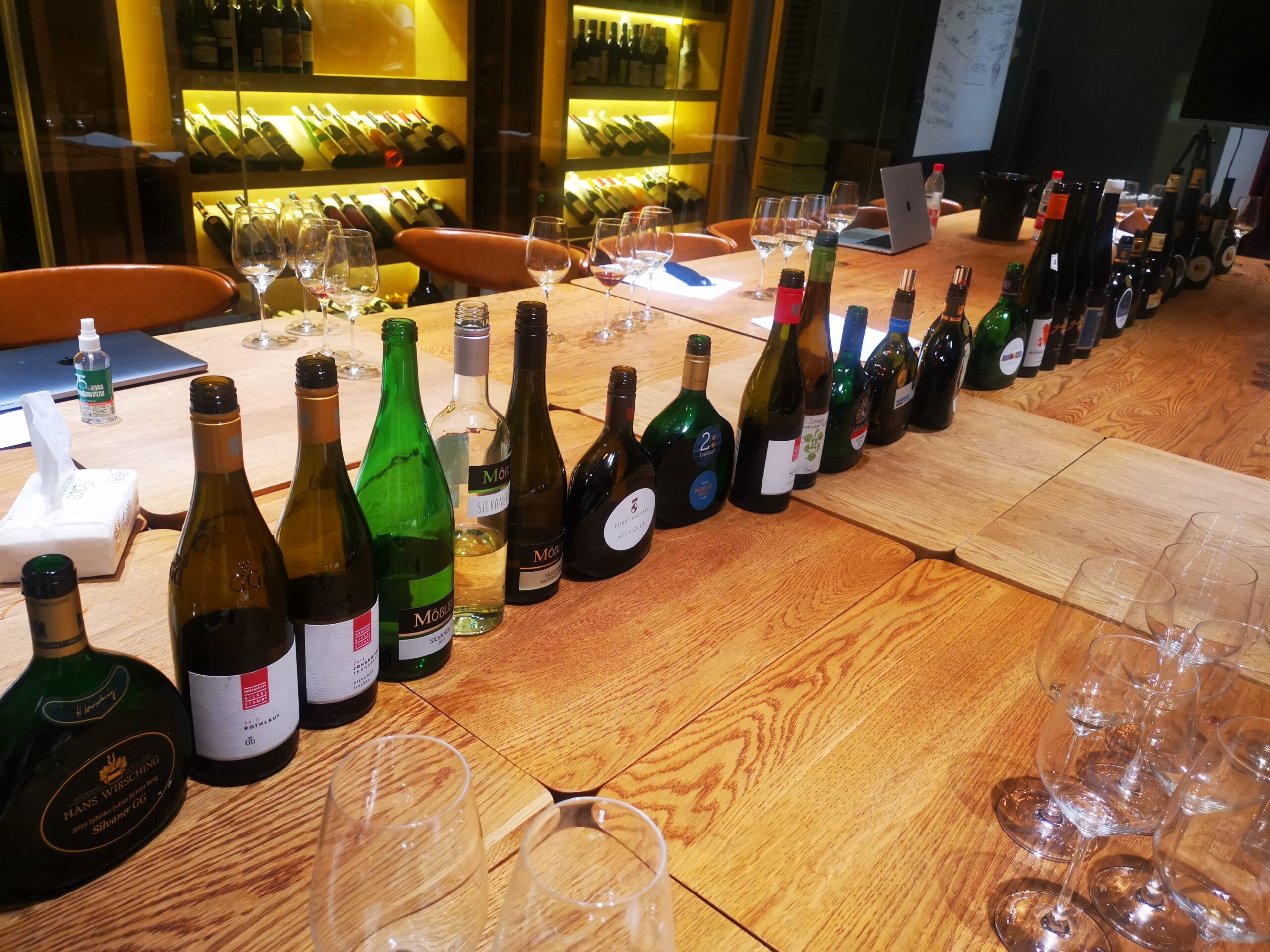
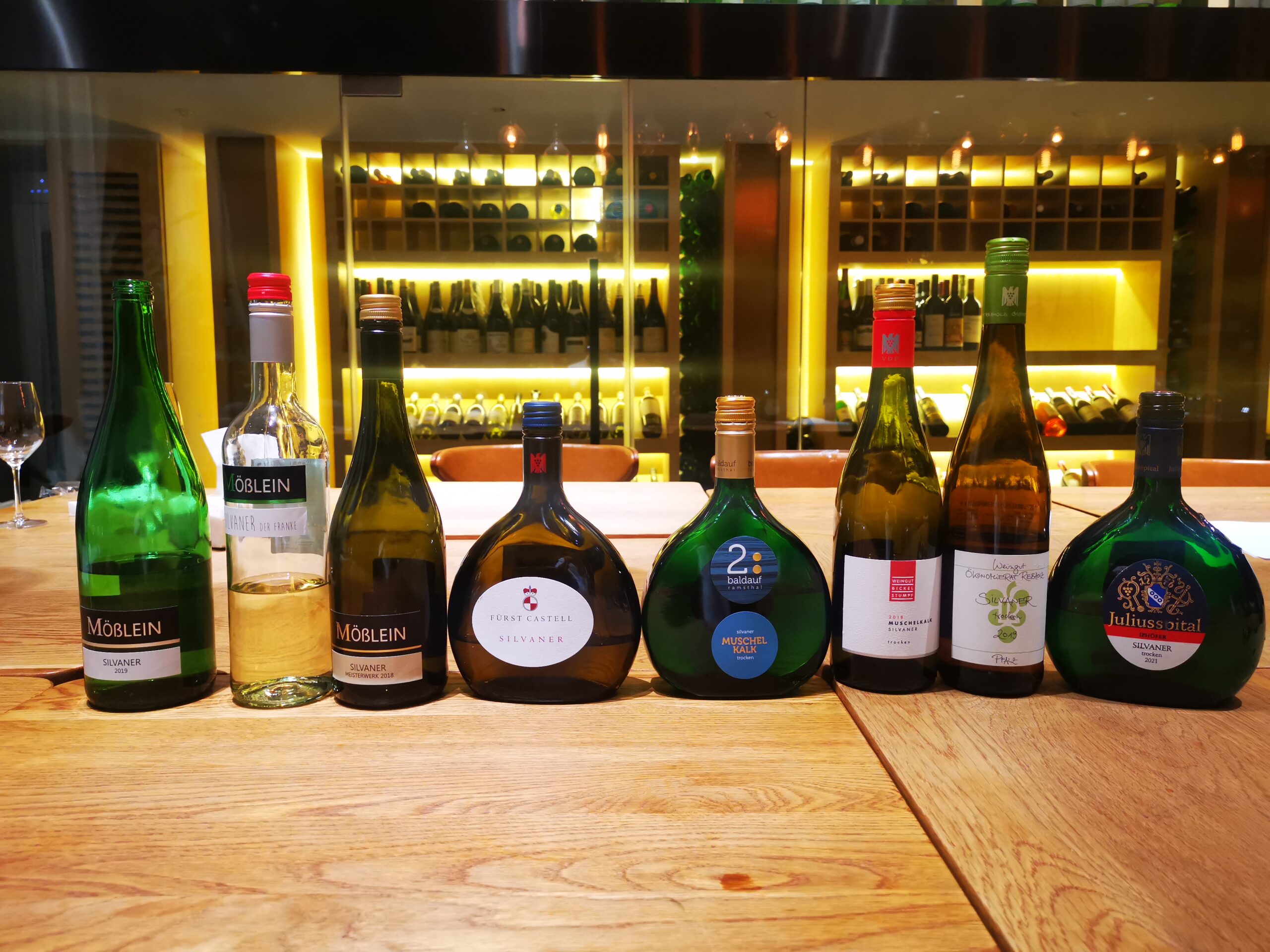
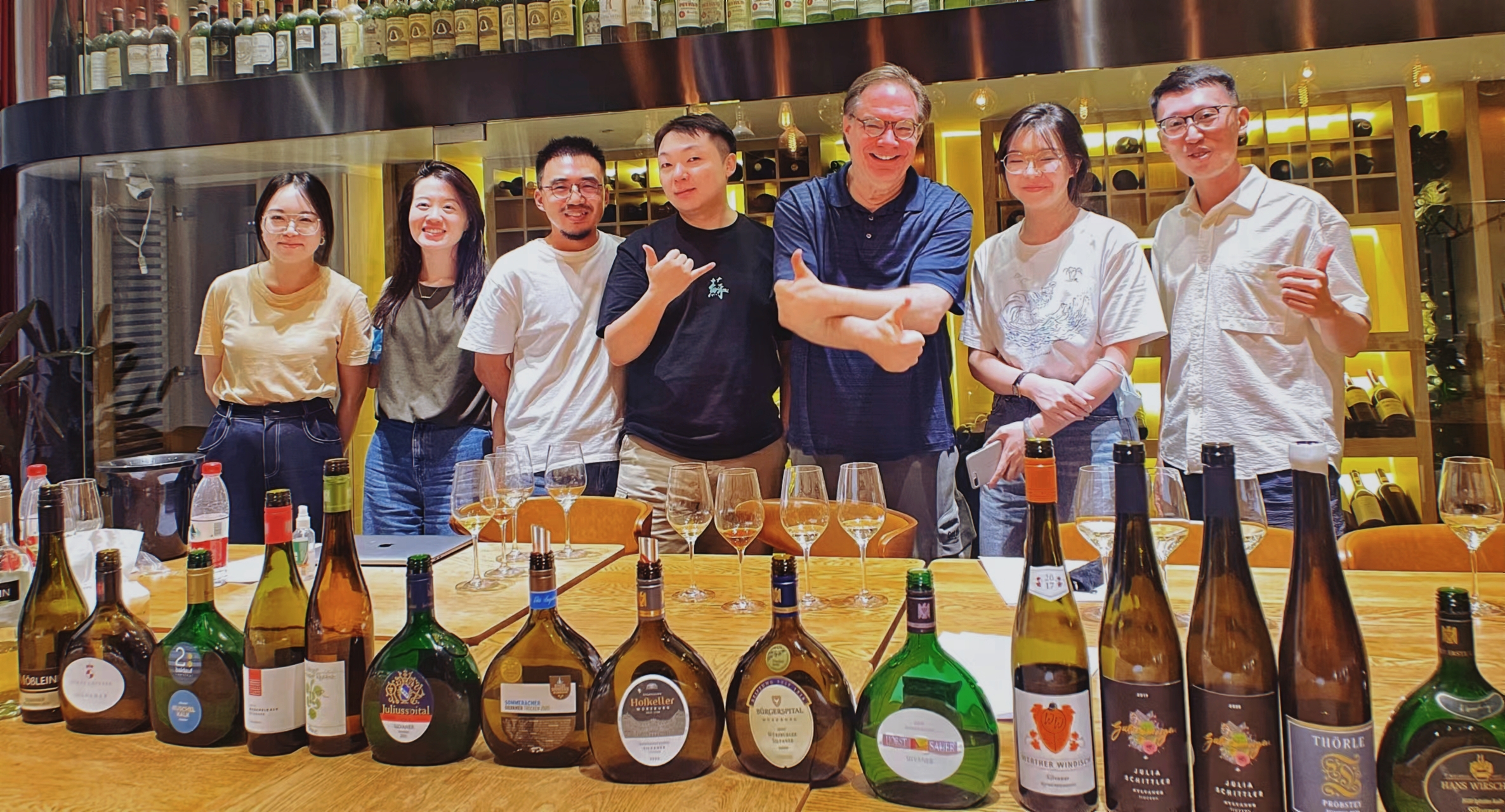
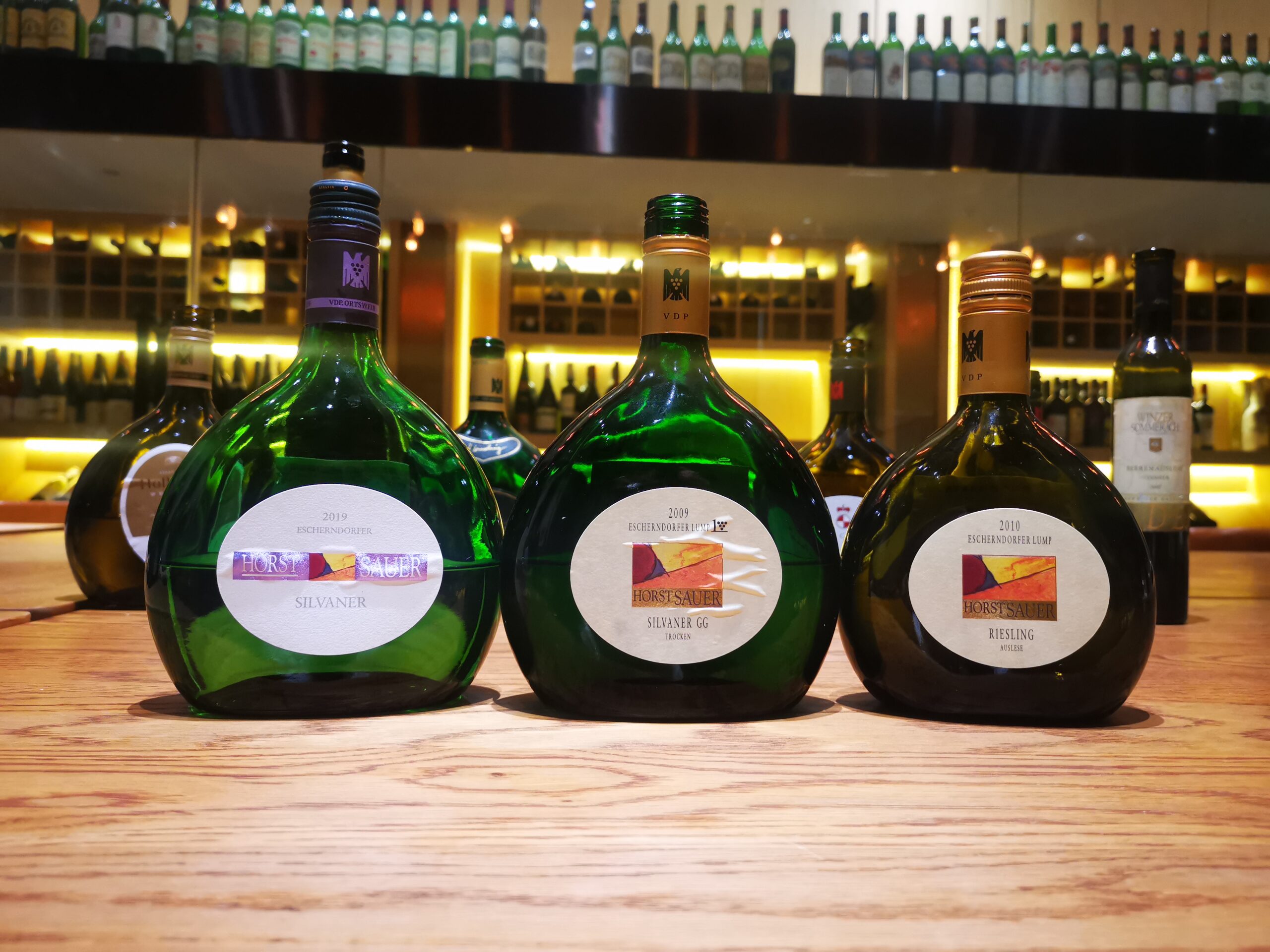
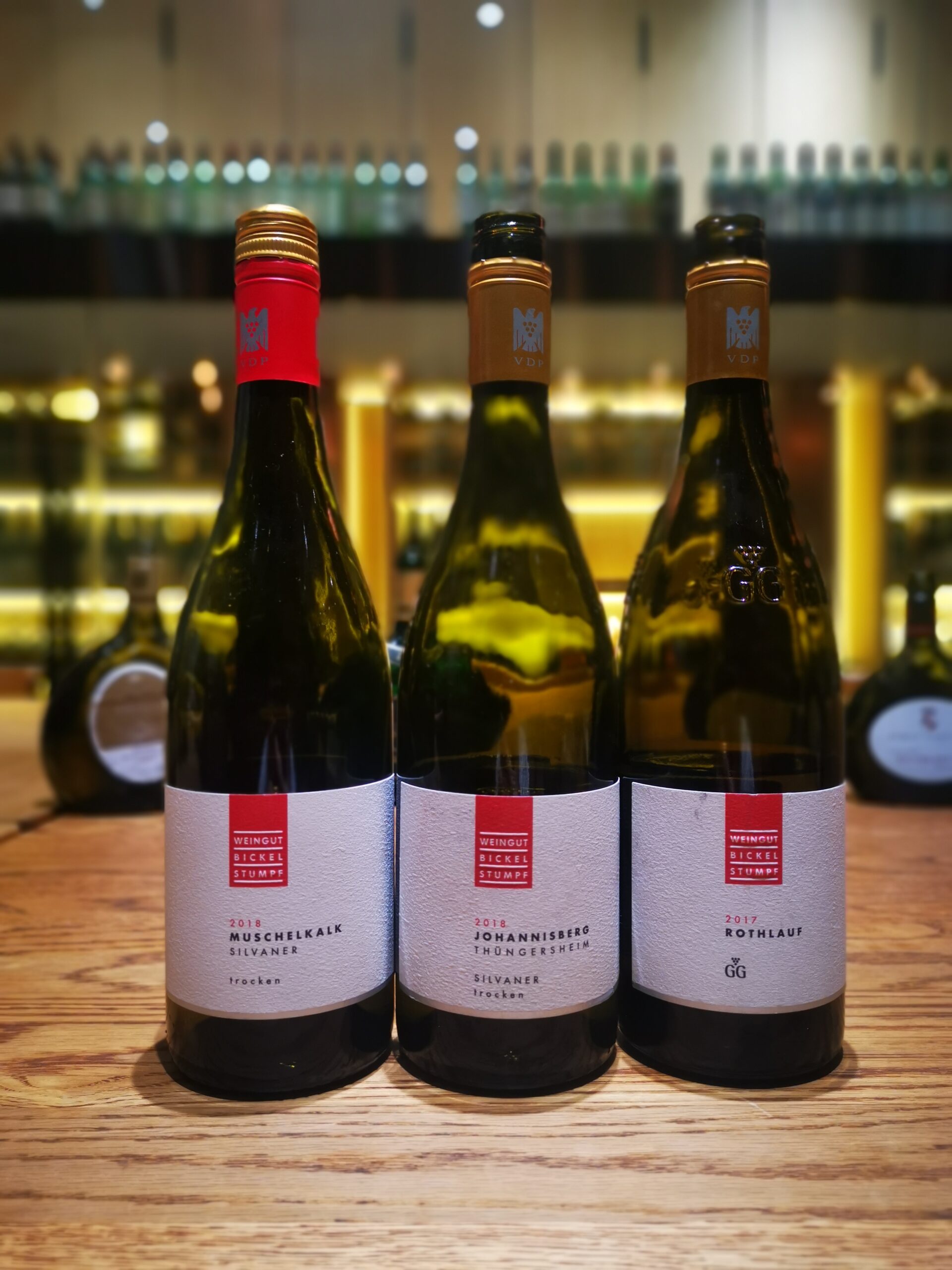
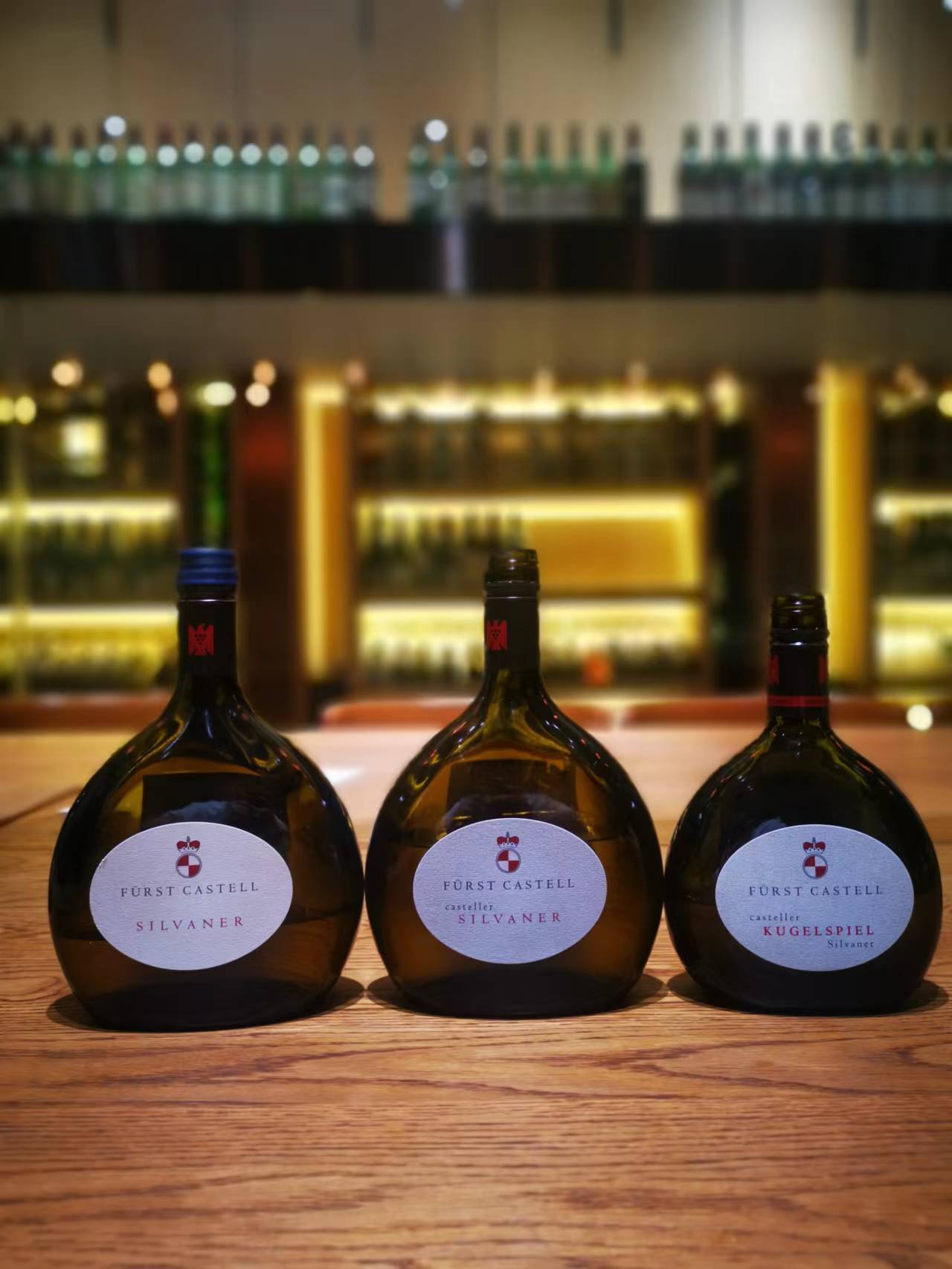
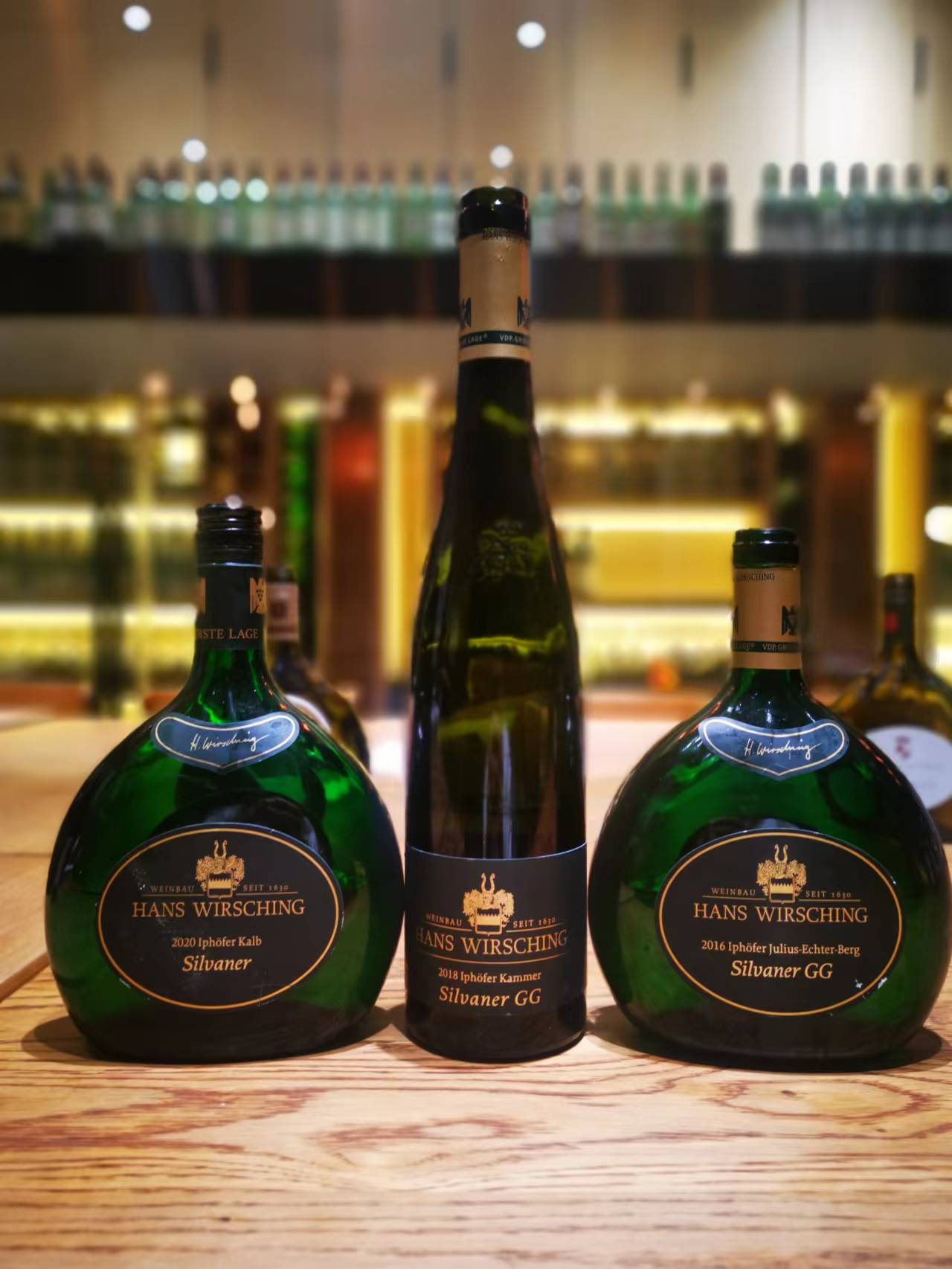
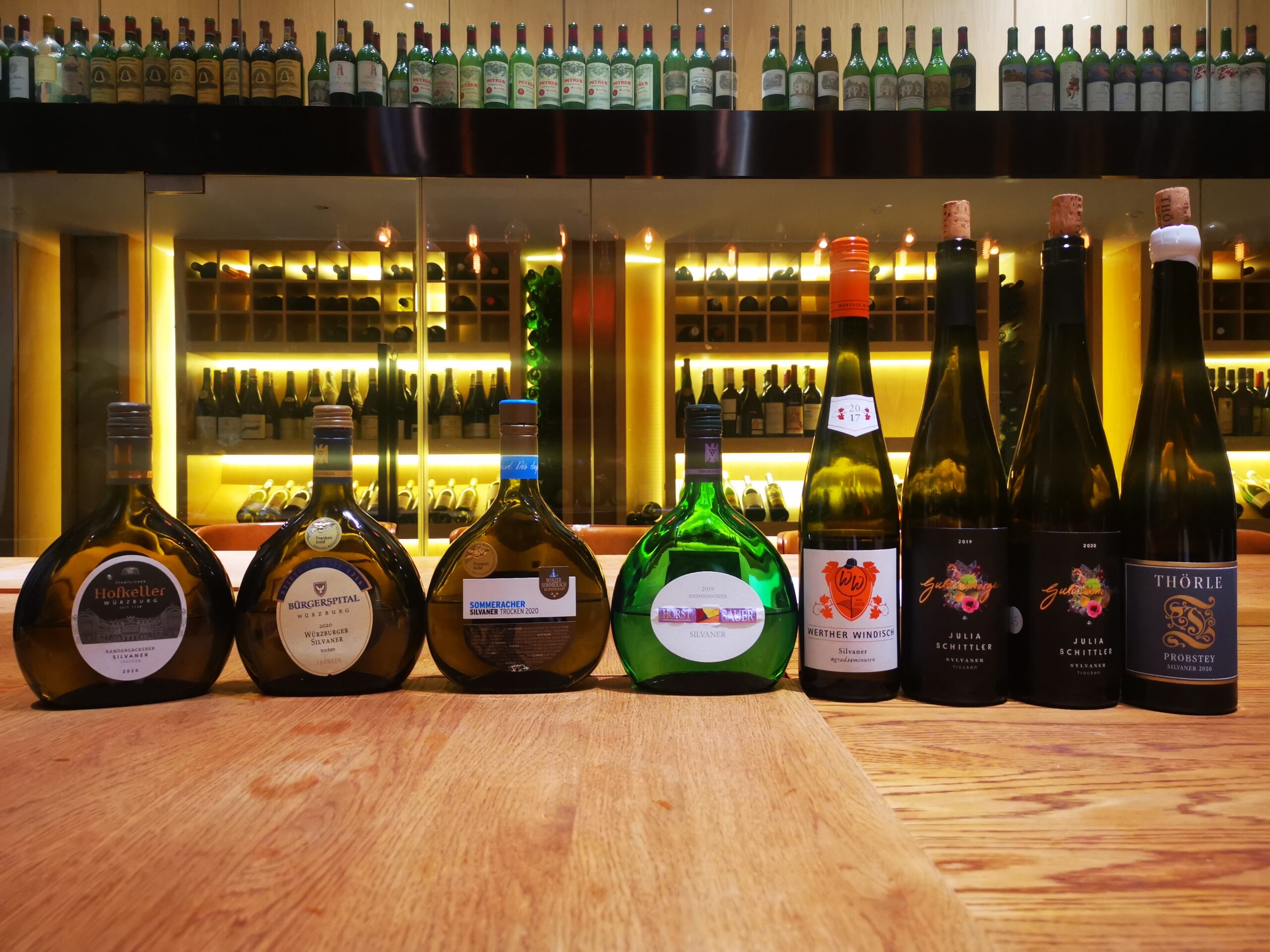
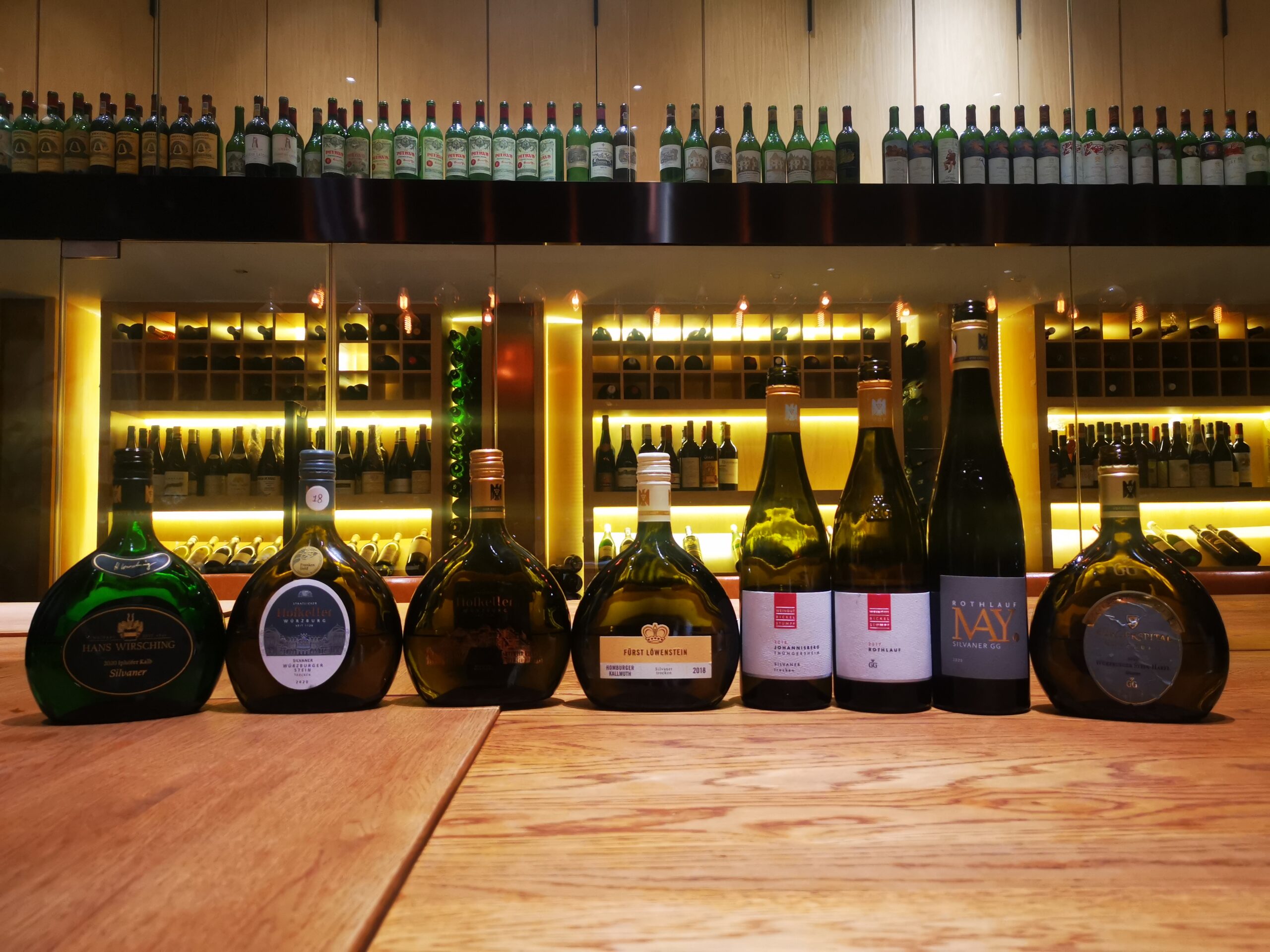
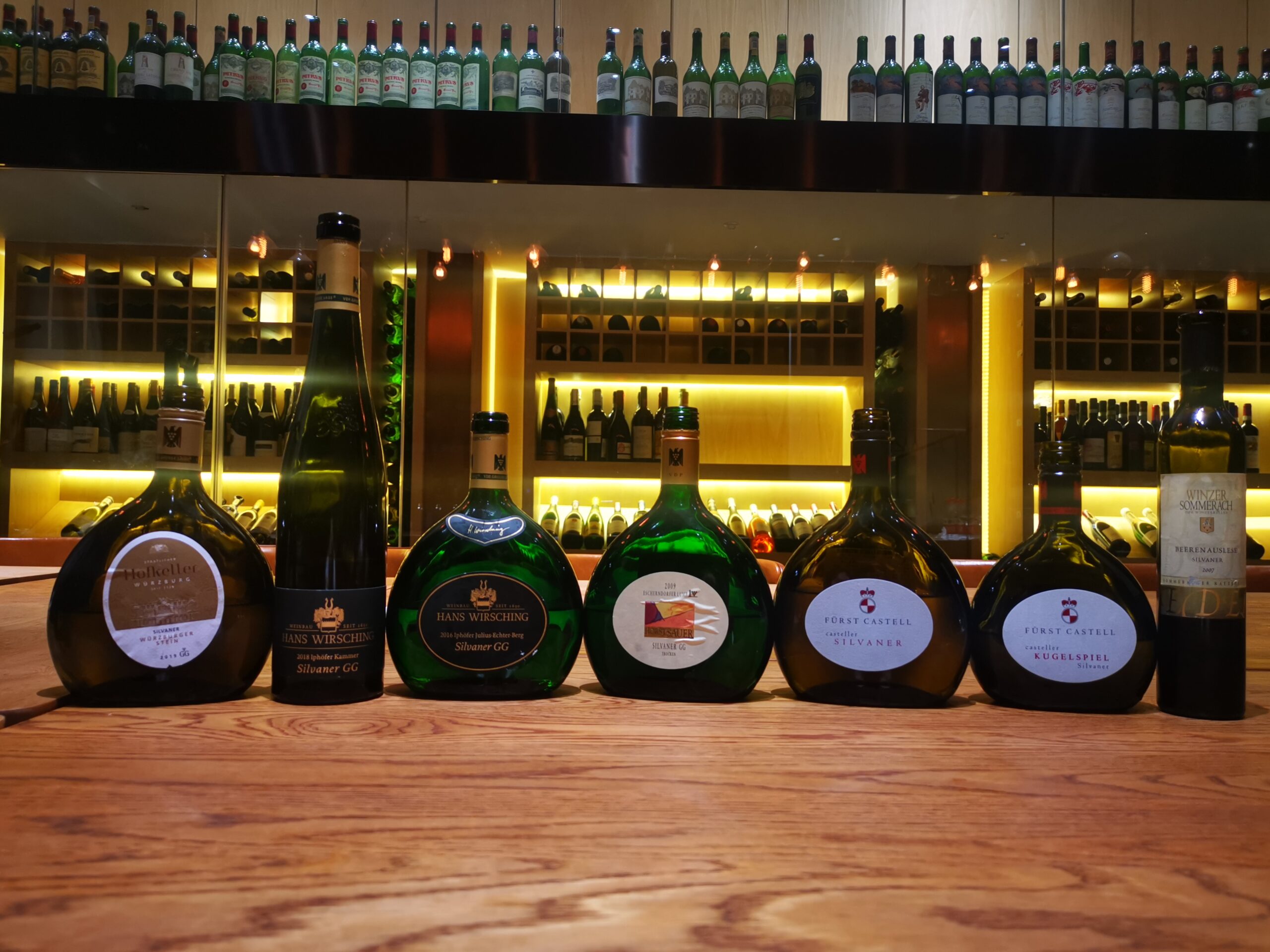




Ian: a truly excellent report on Silvaner / Sylvaner! I, too, cherish these wines in their quirky bottles. Franken wines are lovely.
Thanks so much Paul, WOWWWW, a felklo9w Sylvaner lover! Tell me where you live, next time I’m in your neck of the woods we have to get together for a bite to eat and a bottle or two (or four…) 🙂 🙂 I’m actually not kidding, I love to meet my readers, after all, we are all wine lovrs!
Thanks for the lovely words, glad you enjoyed it. If you like Sylvaner and perhaps haven’t seen them, in the VERTICALS section up in the menu there are a bunch of reports on Sylvaner wines by Alsace’s Burn/Clos St.Imer and Mure’ wineries, as well as Alto Adige’s Kofererhof…I think it makes interesting reading for it helps out Sylvaner/Silvaner, a misunderstood grape, in its proper context relative to other world wine producing areas as well. Glad you enjoyed, I’ll see about doing some more on Sylvaner, but actually on Rielsing too…BTW, bigggggggg roundup article coming up on the latter grape and its wines from Germany in about 2 weeks time! Look for it, cheers.
ian
Ian, thank you for this excellent report on a grape (and region) that get too little coverage. As it happens, I’m heading to Franken shortly for a couple of weeks to visit some producers and get a better sense of its terroirs. You’ve given me a few more names to look out for. Much appreciated and look forward to your future articles.
I am really VERY happy if this report has helped you in any way, in ultimate analysis any magazine worth its salt wants to be of help to its readership, so thanks for the positive feedback. I look forward to doing so in the future, especially by way of little known grapes and wines, not just the tried and true and ultra-famous, about which of course we will also write.
Do let me know what grapes, wines and territories you might be interested in for future articles, we’ll see what we can do.
Ian
WOW, what can I say but colour me envious about your upcoming trip, you have no idea how much I’d like to go to the Franken too, but unfortunately it’s still very difficult for me to travel internationally. I am looking to finally get back on the trail early next year for a good three months straight to make up for lost time and Franken is most definitly a place I plan to visit.
Please do write back and let me know of any discoveries you make, not just concerning Silvaner and Riesling producers i might not have gotten to in this article, but of Muller-Thurgau wines too….for example, Horst Sauer makes a great one. I would love to know so that I can put them on my upcoming visits schedule as well.
Thanks
Ian
Hi Ian, thank you for inviting me to post a few thoughts about Franken. 1 – I spent a good chunk of time in Churfranken, among producers better known for making red wine from red sandstone soils. That said, I thought there were some pretty smart silvaners to be had, particularly those from Bastian Hamdorf, Josef Walter and Rudolf Furst. 2 – The most interesting silvaner from that part of Franken, for may palate at least, was the Weingut Giegerich 2020 Schalk. It started with sweet lemon and lime fruit and blossom notes, then moved towards summer meadows, pollen and a hint of honeysuckle. At times, as it opened in the glass, it seemed to want to veer towards Meursault, and at others it reminded me of Chris Alheit’s chenins. Fascinating wine and stylistically quite different to anything else I tried. 3 – I did not visit Rainer Sauer but we drank his 2018 Silvaner L over dinner. Made from fruit picked two weeks after the grapes that go into the GG and in a spatlese trocken style, it was luscious, rich, full of peaches and apricots yet perfectly poised without heaviness and with no hint of residual sugar. Really impressive example of a more hedonistic style of silvaner. 4 – By no means an undiscovered producer, but I thought the whole line-up at Weingut Am Stein / Ludwig Knoll was very strong. The top end 2020 Stettener Stein GG is still embryonic at this point, but oozes concentration and coiled power in a more high-toned refreshing style – in some ways reminiscent of grand cru Chablis. I’ll save my thoughts on the Franken spatburgunders, portugeisers, etc, for another post! Hope all is well.
WOW, thanks so much for this in-depth comment that we all appreciate greatly here. My apologies for not having replied sooner, but it’s been two hellacious weeks and I have another tough one ahead.
Wonderful insight, thanks so much, i will read this carefully and save its info, and will do my best to go visit some fo the wineries you mention when in Germany visiting and tasting away some time in the (hopefully) first six months of the year…and for sure I’ll make sure to taste the new releases of all these wineries. Thanks so much again, ti was highly fascinating and really informative reading!
Ian